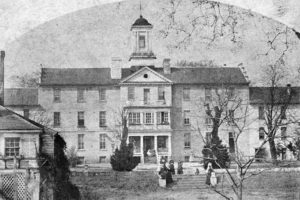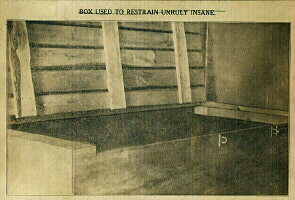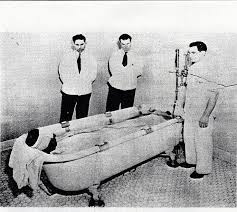
The Public Hospital for Persons of Insane and Disordered Minds, Virginia, in the 1800s
In the January, 1884 issue of the American Journal of Insanity, author Joseph G. Rogers, MD, noted: “The past year has not been marked by the discovery of any remarkable special methods in the treatment of insanity, nor any very remarkable advance in results.”
This had to be discouraging for physicians at these facilities, who wanted to help their patients recover as well as make names for themselves and perhaps do a little empire-building. By this time, too, the public had been scandalized by a number of exposés concerning asylum conditions–and this led to its lessened enthusiasm and support for them. Asylum superintendents very much wanted to keep the public’s confidence, and longed for better treatments and cure rates.

This DeKalb Crib, circa 1905, Was the Type of Device That Could Create Scandal Concerning Asylum Care, courtesy Maryland State Archives
Acute mania (mania that had only recently manifested) had the greatest chance of cure, so alienists tended to concentrate on these cases. What could they do? In Dr. Rogers’ words, the tendency for patients with this condition was to “Wear and Waste,” and he suggested “Rest and Food” to help them. Unfortunately this treatment could be done at home, by family, so asylums also needed to look at treatments that most families couldn’t give.
Even though Rogers admitted that rest and food were the primary treatments for acute mania, he also suggested “the speedy committal to a proper hospital”–meaning, of course, an asylum. There patients could receive the “soothing, easeful [sic] influence of the bath at 90° Fahr.” He noted that the patient would probably have an empty stomach, which should be filled with nutrients, followed by a rest. If the patient were delirious, a hypnotic like chloral could be used to bring about the rest.

Though From a Later Date, This Type of Bath Was Considered Therapeutic
So far, most of this treatment could be given at home by the patient’s family. In my next post, I will continue to give Dr. Rogers recommendations for treatment, which were progressively more complicated and medical in nature.